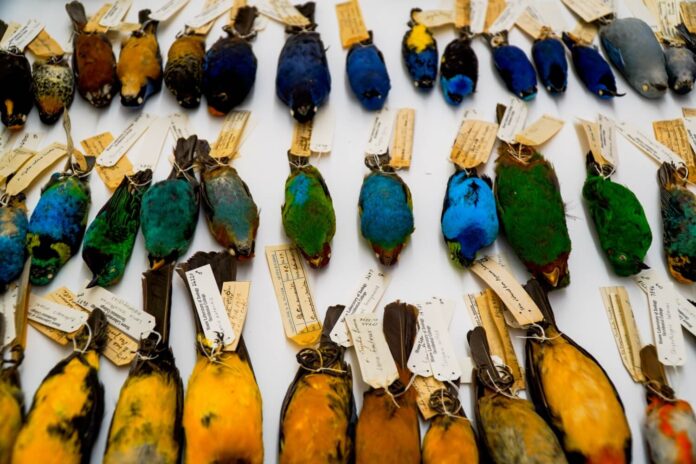
Though the Moore Laboratory of Zoology appears to be like any other building on campus dedicated to the sciences, upon entering the building, visitors are greeted by a mural designed by artist Jane Kim depicting local bird species. The recently remodeled building is filled with natural light. A glass door reveals a room filled with white drawers on the walls. This room is the pride and joy of the Moore Lab, housing 65,000 preserved bird and mammal specimens.
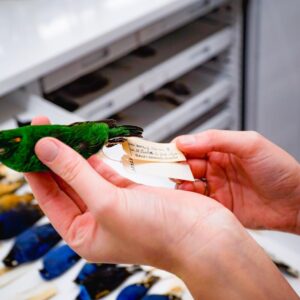
The Moore Lab functions as a scientific resource and is commonly used to study the evolution and genetics of the species within the collection, according to John McCormack, biology professor and director and curator of the Moore Lab.
“Part of the job is making sure that the specimens that are here are both well protected, so that they can continue as scientific resources into the future, and that people know about them and have access to them,” McCormack said. “That goes not just for the Occidental community, but for the worldwide research community. The collection we have here really is an international scientific resource.”
The lab inherited the collection of preserved species from Charles Lamb, a conservationist and ornithologist from LA, and collector Robert T. Moore. According to McCormack, access to preserved, decades-old species encourages historical research and comparisons between birds of the past and present.
“And so it became pretty clear early on that one of the most interesting questions we could ask is a historical one — how have things changed? We’ve really been leveraging the specimens as a resource to answer that question in a number of different ways,” McCormack said.
The lab even houses extinct species, which can serve as useful comparisons to present species, or even educational reminders about the dangers of extinction, according to student researcher Eliza Kirsch (senior).
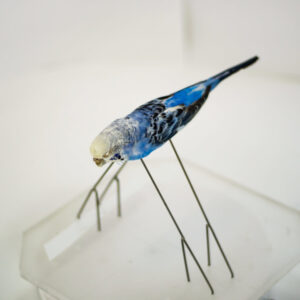
“We also have some specimens of birds that have now gone extinct, which is really helpful to have an example of what those organisms were like,” Kirsch said.
In addition to the collection, the lab is equipped with the tools to analyze the DNA and genetic data of birds, according to Maeve Secor (senior)*, a student researcher at the lab.
The Moore Lab also conducts research projects. In January, Ryan Terrill, who is a postdoctoral researcher at the lab, McCormack and a group of student researchers went to Mexico to research how the distribution of bird species has changed, which is part of the Lab’s ongoing Mexican Bird Resurvey Project (MBRP).
“We have the largest collection of Mexican birds of any natural history collection. It makes our collection really important as a genomic resource to be able to compare change over time,” Secor said.
They surveyed the same area as Lamb and compared his data to their current findings, according to McCormack.
“We actually went to the old site where the Moore Lab collector was, 77 years ago in 1945. We were able to find the exact place, literally walking in his footsteps,” McCormack said.
According to Kirsch, who was also a part of the MBRP, the group found that some bird populations had decreased due to issues such as hunting and deforestation, which are prominent in these areas.
“We think that it was largely due to hunting. Some of the others could be due to habitat loss or just fragmentation,” Kirsch said.
The bird populations have also moved to different areas due to climate change, Terrill, who is the staff lead investigator of the MBRP, said.
Additionally, the MBRP also studied DNA changes in the bird species over time.
“Another part is looking for DNA changes across several key species,” McCormack said. “We’re not just asking the question, ‘Have the birds changed in their distributions?’ But for the ones that are still around, has their DNA changed in response to any of these human caused differences to their habitat?”
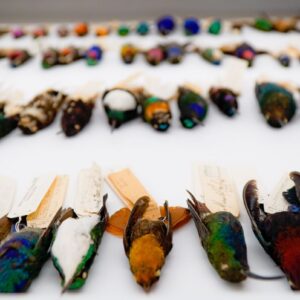
According to Secor, studying the changes in bird species is important because it opens pathways to protect those species.
“If you can make a case that it is rare and different and declining, then you can protect it. The Endangered Species Act is one of the only pieces of legislation that’s currently available to sue to protect any animal,” Secor said.
In addition to the MBRP, Terrill was also part of a team that recently published a description of a new species and genus of tanager. The species is the Inti Tanager, previously referred to as the “Kill Bill Tanager.” According to Terrill, the bird was first spotted over 20 years ago in Peru, but because the bird is migratory, it was difficult to find. Additionally, difficulties acquiring the proper permits for entrance to various areas extended the project, Terrill said.
“Between our trip down there and when we were finally able to publish the description of the species was another 10 years, just to try to clear everything up,” Terrill said.
Discovering a new genus is a rare event, as on average, fewer than one genus is announced yearly, on a global scale.
“The really cool thing about this is that it’s completely different from anything out there. It’s a completely new genus, and nobody expected it existed,” Terrill said.
In the lab, Staff Lead Investigator Noah Medina is leading a program called oBird to create 3D models of all of the birds in the collection. According to Medina, the process begins by placing the physical bird specimen on a turntable. Then, a camera, which is synchronized with the turntable, takes photos. This is repeated at three different angles, to create a total of 270 photos.
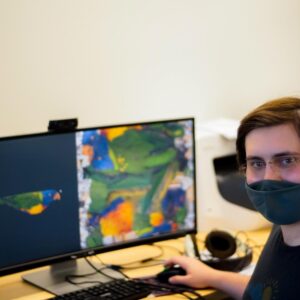
“You have to select a bird that looks nice. Then you have to make it look even nicer for picture day,” Medina said. “Once it’s done we have 270 pictures of this bird from basically every angle you could possibly want.”
With the help of various computer programs, including a program called Metashape, the photos are stitched together and textured in various ways, Medina said.
According to Medina, this project is helpful for research, as it allows for detailed depictions of the species without having to be physically present in the lab. Additionally, the lab can share models of rare or extinct species, without having to actually loan such a rare specimen.
“It’s a lot easier to send a bird over email than snail mail,” Medina said.
According to Secor, the Moore Lab is a special place for all of those involved and it is an incredibly beneficial research center for protecting species.
“You can’t really do conservation work or understand how things are declining if you don’t know exactly what the species are or what the species’ limits are,” Secor said. “Taxonomy and identifying species correctly is fundamental to any sort of conservation work.”
According to Kirsch, the Moore Lab gives students the space to conduct undergraduate research, as well as to explore future career paths, should they be interested.
“I think it’s really great to let undergrads have this experience of doing research because that’s hard to do at a lot of bigger schools. It exposes undergrads to potential career paths,” Kirsch said.
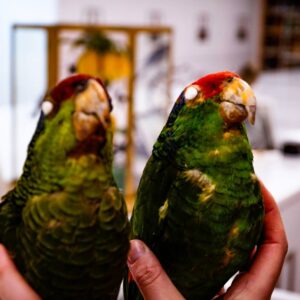
The Moore Lab is an important resource both inside and outside of Occidental for conservation, research, technology and the future of species, McCormack said. One of his goals for the lab is to contribute to the progression of citizen science.
“Today, now that we’ve inherited that collection, it’s our duty and responsibility to make good scientific use of it,” McCormack said.
*Maeve Secor is a former staff writer for The Occidental.
![]()


































